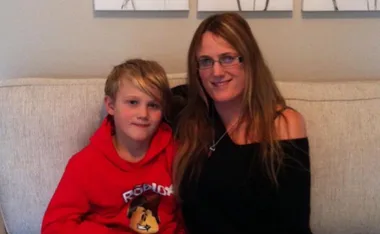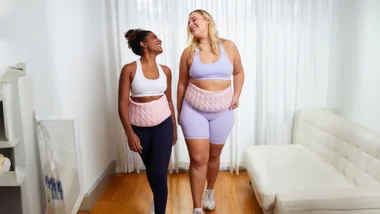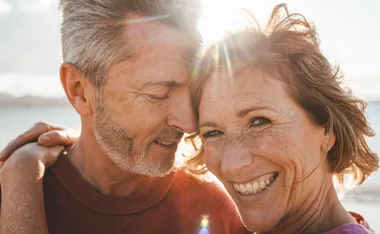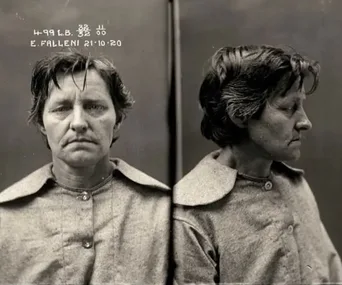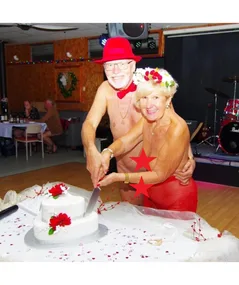Ray Martin tells Woman’s Day: “Terri is a broken woman who’s lost the love of her life.”
Terri Irwin is tough, brave and courageous. She’s also brittle and feeble, like someone who has been in hospital for three months — one of the most harrowing interviews I’ve done. What struck me most is this is a love story — a fair dinkum love affair. The one. Terri thought she and Steve — like a pair of swans — would sail off into the sunset. But suddenly, he was taken away — the absolute love of her life. This is as deep as it gets.
We knew it was an adventure story, we knew they were a good team, but until you see someone whose whole life has collapsed and yet has to go on for the kids and the zoo — it’s heartbreaking.
Terri’s very capable — she’s running the world and then, in the next breath, she says she’s been lying on the floor crying in the foetal position. But only when the kids aren’t around. Terri is going through all the emotions you would expect.
I knew she would be emotional and she cracked around 15 times during the interview. Each time I thought we’d need to stop so I could give her a cuddle, but she would take a deep breath, steel herself and go on. She’s got a great capacity but clearly this is all still raw.
The strongest message we got from Terri was that Steve thought she was better than she thought she was. He gave her confidence to do things she didn’t think she could do. Not just jumping crocs, but in life. She’s obviously an intelligent, confident, capable woman. And yet he pushed her further and made her stronger.
She says the park will go on, she will fulfil the dream they had together — they’re obviously committed to the wonderful vision, but having said that, she looks over her shoulder and says “I wish he was here to help me.” That’s the hard part. I asked Terri “Have you started to adjust?” and she said “I’ll never adjust”. I think she means it.
Steve was a big kid. He taught Terri it was okay to stand in the rain, get your clothes all muddy, tear them — nobody cares. All these things children know and as adults we forget.
Terri really hadn’t been out of the house. She hadn’t even wandered around the zoo after dark. She hadn’t read newspapers, watched TV or listened to radio. When she walked out at the memorial service, she was gob-smacked by the crowd when they stood and roared. She said Steve would’ve said “Crikey mate! Can you believe this?”
Looking at the floral tributes for the first time, Terri put her arm around my waist for support and I put my arm around her shoulder because I feared she was going to drop to the ground. She was so feeble, walking gingerly because she was so raw, such an emotional wreck, I think she feared she would stumble and fall.
Shaking her head she said “I love Australia. This is why Steve loved it here. I can’t believe people are so kind. I couldn’t make it through without this sort of support.” Australians aren’t a demonstrative lot — but we’ve done it.
It’s hard for you and me to believe the way Bindi performed at the memorial service. She didn’t seem like a girl who realised her dad was gone. I don’t understand death at my age; I don’t know how at eight you could possibly understand it.
Terri says both Bindi and Robert were introduced to death in the animal world early on. She says Bindi did understand what it was all about but she acknowledges what the psychologists have said, that it may take 10 years before it hits home.
Steve meant much more to Australia than I thought. As journalists, we’re supposed to have our fingers on the pulse, but it floored me. I had no idea there would be this overwhelming emotion for him. I knew he was the most famous Australian in the world but I didn’t think Australians would grieve as publicly as they have.
We cringed a bit at Steve — as David Wenham said in that poem he read at the memorial — but there is a bit of Steve Irwin in all of us. We’ve got to stop cringing at people who are real and he was like that on and off camera. That’s what he was. We’re tearaway larrikins — we’ve got to be proud of that. Steve reminded us we are pretty unique — and he was more unique than the rest of us.
RELATED ARTICLES
My Sunday with Terri Irwin
Steve Irwin 1962 — 2006
Newsletter conversion description. Get the latest in your inbox.












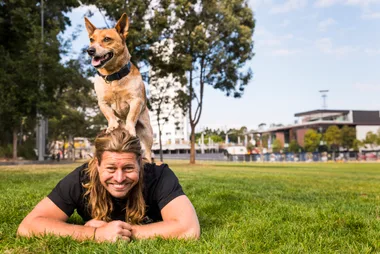














.png?resize=380%2C285)
.jpg?resize=380%2C285)



